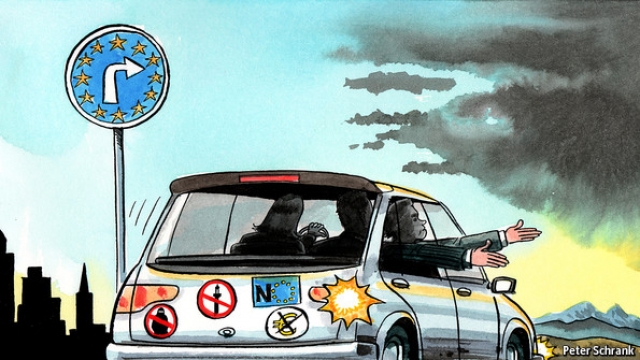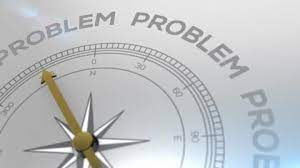
In a recent essay, "The Dark Side of Wikipedia - The Billion-Dollar Web of Deception, Lies & Elite Manipulation," Geeta Pillai and Nitish Verma placed Wikipedia, an online encyclopedia widely used by millions, under scrutiny. Pillai and Verma noted that:
"In an era where information is as accessible as it is manipulable, Wikipedia stands as a titan of knowledge, its pages a first port of call for the curious and the questioning. Yet, beneath the surface of this digital encyclopedic behemoth lies a labyrinth of controversies, allegations, and actions that raise profound questions about the nature of truth, trust, and the very fabric of the internet itself.
At the heart of this storm is Wikipedia's unparalleled dominance on the web, bolstered by Google's algorithm that assigns it a near-perfect Domain Authority score. This ranking ensures that for virtually any query, Wikipedia's interpretation of the facts is among the first presented to the inquirer. This visibility, combined with the fleeting attention spans of the modern internet user, makes Wikipedia not just a repository of knowledge but a battleground for narrative control.
The notion that Wikipedia is an open, democratic platform where "everyone can just edit" is a façade... Behind the benign exterior of collective knowledge contribution lurks a shadowy reality: hired troll armies orchestrating the content that shapes public perception. These digital mercenaries engage in edit wars, pushing agendas and narratives far removed from neutrality, effectively locking out genuine contributions under the guise of maintaining factual accuracy… Wikipedia's reliance on a volunteer editing base predominantly composed of Western males has sparked debates about the diversity of perspectives on the platform. This demographic homogeneity raises concerns about the inclusivity of the knowledge it purports to disseminate, potentially sidelining voices and views from less-represented groups. As Wikipedia grapples with these challenges, the implications for society's relationship with information are profound. In a digital age defined by the quest for truth amid a sea of misinformation, Wikipedia's struggles encapsulate the broader dilemmas of trust, authority, and the power dynamics that shape our collective understanding of the world."[1]
As the Center for Eurasian Studies (AVİM), it is hard to disagree with this assessment in light of our past experiences at the institutional level. In this context, we should note that some of the articles referenced on AVİM's Wikipedia page have been questioned by "unidentified digital mercenaries" who wage editing wars on behalf of some ethnic groups in 2021. These "mercenaries" claimed that AVİM was not an independent think tank. Following our detailed explanations regarding these allegations, Wikipedia management concluded there was no consensus on the claims and ensured that the AVİM page was preserved on Wikipedia. However, three years later, the AVİM page on Wikipedia was deleted on February 1, 2024, following organized attacks by these "unidentified" but well-known "digital mercenaries." Correspondence regarding the subject is conserved in our archives for future research. We should point out that during this process, the AVİM website was exposed to digital attacks dozens of times, our archives were tried to be deleted, and our website was disabled from time to time due to these digital attacks. AVİM's well-thought-out assessment at this stage is that although Wikipedia is widely used for general information purposes, it is a platform open to malicious edits by anonymous people, unreliable, and far from being accepted as an academic source. It is unfortunate that Wikipedia turned into a platform for misinformation and propaganda, often targeting certain ethnicities and their history, culture, and even their country of origin.
In this context, as a brief case study, we will focus on the systematic attack on Türkiye and the Turks that uses manipulation, distortion, and misrepresentation, especially in connection with the events 1915 on the Wikipedia pages. A similar attitude is displayed in almost all the contentious subjects concerning the Turks and their country.[2]
Gross oversimplifications, unfounded claims, distorted and manipulated figures, and sources are repeatedly presented as facts. A case in point is Wikipedia's page on "Casualties" of Armenians during the events of 1915. It alleges that "the official Ottoman statistics compiled for the period between 1915 and 1917–18 were of 800,000 killed. This figure originates from Djemal's bureau. The results were published in the official Ottoman gazette… they relied on reports and statistics they had compiled in two months; on March 14, 1919, the results were made public by Djemal."[3]
This is not only factually inaccurate but also an unabashed display of fraud. No such official statistics were compiled, and since they did not exist, they could not originate from "Cemal’s Bureau,” indeed, they were not published in “the official Ottoman gazette.” The Wikipedia article does not clarify who this “Cemal” was. It is a deliberate omission intended to give the impression that he was the same person as Cemal Pasha, Syria's famous war-time military governor. The person in question was Cemal Keşmir, the interior ministry of the anti-Unionist cabinet of Damat Ferit Pasha, who distinguished itself with its enmity for the Committee of Union and Progress and its members. The figures were not made public on March 14, 1919. Instead, Cemal Keşmir gave an interview to a French-language newspaper, which was published on March 13, 1919, and the newspaper misreported his words, alleging that he said 800,000 Armenians were killed. After the interview, the minister made further statements to the press and insisted that his words had been misreported and that the figure of 800,000 was not the number of killed but the number of relocated Armenians, adding that the number of killed could not have been so high. If, as the Wikipedia article alleges, the figures were based on two months of research and official compilations of statistics, which were made public and then published in the official gazette, indeed, Minister Cemal Keşmir could not have so openly disputed their veracity and insist that his words had been misrepresented. The amazing point is not the series of misrepresentations, distortions, and made-up stories about these figures but the fact that they could be easily used in Wikipedia articles and kept in it for over a decade.
To support the illusion that “the figure of 800,000 killed” was verified and corroborated by official Ottoman and Turkish institutions, the Wikipedia article further argues that “a Turkish military estimate published by Lt. Col. Nihat in 1928” also used the figure of 800,000. Thus, the Turkish military allegedly verified and confirmed this figure at that time. Moreover, Yusuf Hikmet Bayur, the doyen of Turkish historians, “in a famous work,” reportedly wrote: “800,000 Armenians … died as a result of deportations or died in labor brigades.” Thus, in addition to an alleged official Turkish Military estimate, the Wikipedia article now creates the impression.
This perfectly illustrates how Wikipedia trolls operate, spread falsehood, and invent tales. The alleged “Turkish military estimate published by Lt. Col. Nihat in 1928” was not an estimate by the Turkish military and was not published by Lieutenant Colonel Mehmet Nihat. It was a book published by the French military author Maurice Larcher. In this book, Larcher wrote: “Anatolia had also lost … 800,000 Armenians … as victims of the deportations or those who died in the labor battalions.” In 1928, the Turkish General Staff published a translation (by Lieutenant Colonel Mehmet Nihat) of this book but by adding two detailed critiques to the introduction by historian and intellectual Yusuf Akçura and Lieutenant Colonel Mehmet Nihat, both of which noted that Larcher’s study, while an important step, lacked balance in his judgments and did not consult a number of key sources to evaluate the topic better. Thus, figures presented as an official Turkish Military estimate on the Wikipedia pages were no more than a translation of a book by a French military author, and the Turkish translation was critiqued for lack of balance.
It is significant to note that Larcher’s study quotes a French investigation carried out after the war and gives a lower figure for the Armenian losses. According to Larcher: “a French investigation carried out in 1920 concluded that the Turkish people and soldiers generally behaved in a correct way towards the deported, but that some 500,000 perished” as a result of privation caused by the war in primitive regions of sickness, exhaustion following long marches, immediate changes of climate, and attacks by marauders upon rich convoys.
The allegation that Yusuf Hikmet Bayur wrote, “800,000 Armenians … died as a result of deportations or died in labor brigades,” is likewise a manipulation of Bayur’s book and words. Bayur merely quoted Maurice Larcher’s book without commenting on their accuracy. In a subsequent part of his work dealing with the Armenian issue and the events of 1915, Bayur delved into the question in more detail and quoted Larcher’s work, which used the figure of 500,00, nothing that Larcher’s account contained great exaggerations and was “highly biased against us.” Thus far from accepting the figure of 800,000, Bayur criticized Larcher for exaggerations and displaying bias against the Turks.
This brief case study above clearly shows that Wikipedia cannot be relied upon as an objective reference point and source. Many of its allegations are either wholly invented or thoroughly distorted and misrepresented to render entirely useless, especially in controversial topics such as the events of 1915.
As Pillai and Verma note in their essay: “Behind the benign exterior” of collective knowledge contribution lurks a shadowy reality,” where “hired troll armies orchestrating the content that shapes public perception.”. A lie does not live long. The truth has a historical habit of coming out sooner or later. This will be also the fate of incorrect and fake information on Wikipedia.
*Picture: Linked-In
[1] Verma Nitish and Geeta Pillai, “EXCLUSIVE: The Dark Side of Wikipedia - The Billion-Dollar Web of Deception, Lies & Elite Manipulation,” BNN Breaking, February 13, 2024, https://bnnbreaking.com/breaking-news/the-dark-side-of-wikipedia-billion-dollar-deception-lies-elite-manipulation-3750235.
[2] “Articles for Deletion/Institute for Armenian Research,” Wikipedia, October 22, 2021, https://en.wikipedia.org/w/index.php?title=Wikipedia:Articles_for_deletion/Institute_for_Armenian_Research&oldid=1051197313 ; “Articles for Deletion/Center for Eurasian Studies,” Wikipedia, February 1, 2024, https://en.wikipedia.org/w/index.php?title=Wikipedia:Articles_for_deletion/Center_for_Eurasian_Studies&oldid=1201639130.
[3] “Casualties of the Armenian Genocide,” Wikipedia, April 16, 2024, https://en.wikipedia.org/w/index.php?title=Casualties_of_the_Armenian_genocide&oldid=1219222234.
© 2009-2025 Center for Eurasian Studies (AVİM) All Rights Reserved
No comments yet.
-
 GERMANY’S FAR-RIGHT TERRORISM AND THE TIMID NSU CASE VERDICT
GERMANY’S FAR-RIGHT TERRORISM AND THE TIMID NSU CASE VERDICT
Teoman Ertuğrul TULUN 25.09.2020 -
 EP TURKEY RAPPORTEUR PIRI CONFIRMS WHAT HAD ALWAYS BEEN SUSPECTED: “EVEN IF TURKEY WERE A PERFECT DEMOCRACY, MERKEL AND […] SARKOZY WOULD NOT WANT TURKEY IN THE EU”
EP TURKEY RAPPORTEUR PIRI CONFIRMS WHAT HAD ALWAYS BEEN SUSPECTED: “EVEN IF TURKEY WERE A PERFECT DEMOCRACY, MERKEL AND […] SARKOZY WOULD NOT WANT TURKEY IN THE EU”
Teoman Ertuğrul TULUN 04.04.2019 -
 GERMAN-FRENCH JOINT CULTURAL INSTITUTES: TRANSFORMATION OF THE “CIVILIZING” MISSION OF WEST EUROPEAN COLONIALISM
GERMAN-FRENCH JOINT CULTURAL INSTITUTES: TRANSFORMATION OF THE “CIVILIZING” MISSION OF WEST EUROPEAN COLONIALISM
Teoman Ertuğrul TULUN 26.02.2019 -
 PEACE TREATY OF LAUSANNE AND THE END TO ARMENIAN ASPIRATIONS
PEACE TREATY OF LAUSANNE AND THE END TO ARMENIAN ASPIRATIONS
Teoman Ertuğrul TULUN 22.07.2016 -
 POSSIBLE EFFECTS OF A RUSSIAN-CHINESE JOINT SWIFT SYSTEM ON THE EURASIAN ECONOMY AND THE WORLD TRADE SYSTEM
POSSIBLE EFFECTS OF A RUSSIAN-CHINESE JOINT SWIFT SYSTEM ON THE EURASIAN ECONOMY AND THE WORLD TRADE SYSTEM
Teoman Ertuğrul TULUN 23.12.2021
-
 RISING ISLAMOPHOBIA IN THE WESTERN WORLD AND THE TURKISH-ARMENIAN CONTROVERSY
RISING ISLAMOPHOBIA IN THE WESTERN WORLD AND THE TURKISH-ARMENIAN CONTROVERSY
Mehmet Oğuzhan TULUN 15.03.2019 -
 THE ELECTION PROCESS OF THE ARMENIAN PATRIARCH OF ISTANBUL HAS GAINED MOMENTUM
THE ELECTION PROCESS OF THE ARMENIAN PATRIARCH OF ISTANBUL HAS GAINED MOMENTUM
Mehmet Oğuzhan TULUN 29.05.2017 -
 EU STRATEGIC COMPASS FOR SECURITY AND DEFENCE SHOWS THE WRONG COURSE AT THE WORST POSSIBLE TIME
EU STRATEGIC COMPASS FOR SECURITY AND DEFENCE SHOWS THE WRONG COURSE AT THE WORST POSSIBLE TIME
Teoman Ertuğrul TULUN 04.04.2022 -
 NATO AT SEVENTY
NATO AT SEVENTY
Aslan Yavuz ŞİR 03.04.2019 -
 ARMENIA’S CHOICE: EAST OR WEST?
ARMENIA’S CHOICE: EAST OR WEST?
Hande Apakan 22.02.2015
-
25.01.2016
THE ARMENIAN QUESTION - BASIC KNOWLEDGE AND DOCUMENTATION -
12.06.2024
THE TRUTH WILL OUT -
27.03.2023
RADİKAL ERMENİ UNSURLARCA GERÇEKLEŞTİRİLEN MEZALİMLER VE VANDALİZM -
17.03.2023
PATRIOTISM PERVERTED -
23.02.2023
MEN ARE LIKE THAT -
03.02.2023
BAKÜ-TİFLİS-CEYHAN BORU HATTININ YAŞANAN TARİHİ -
16.12.2022
INTERNATIONAL SCHOLARS ON THE EVENTS OF 1915 -
07.12.2022
FAKE PHOTOS AND THE ARMENIAN PROPAGANDA -
07.12.2022
ERMENİ PROPAGANDASI VE SAHTE RESİMLER -
01.01.2022
A Letter From Japan - Strategically Mum: The Silence of the Armenians -
01.01.2022
Japonya'dan Bir Mektup - Stratejik Suskunluk: Ermenilerin Sessizliği -
03.06.2020
Anastas Mikoyan: Confessions of an Armenian Bolshevik -
08.04.2020
Sovyet Sonrası Ukrayna’da Devlet, Toplum ve Siyaset - Değişen Dinamikler, Dönüşen Kimlikler -
12.06.2018
Ermeni Sorunuyla İlgili İngiliz Belgeleri (1912-1923) - British Documents on Armenian Question (1912-1923) -
02.12.2016
Turkish-Russian Academics: A Historical Study on the Caucasus -
01.07.2016
Gürcistan'daki Müslüman Topluluklar: Azınlık Hakları, Kimlik, Siyaset -
10.03.2016
Armenian Diaspora: Diaspora, State and the Imagination of the Republic of Armenia -
24.01.2016
ERMENİ SORUNU - TEMEL BİLGİ VE BELGELER (2. BASKI)
-
AVİM Conference Hall 24.01.2023
CONFERENCE TITLED “HUNGARY’S PERSPECTIVES ON THE TURKIC WORLD"









